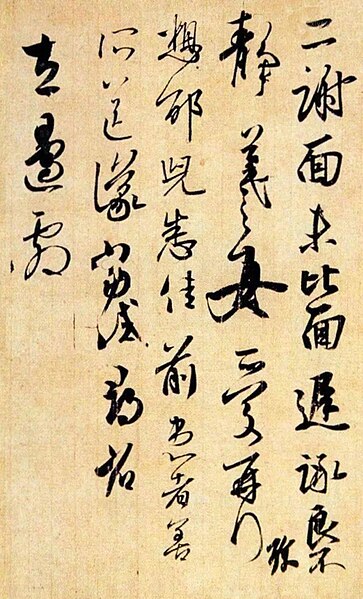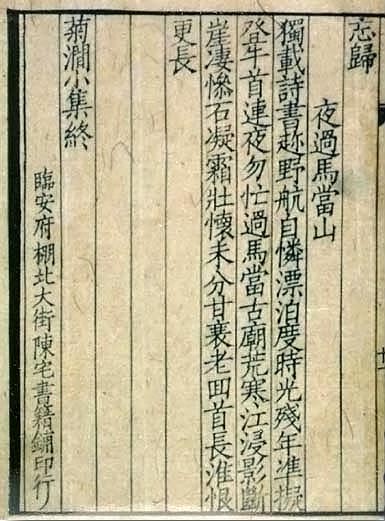Difference between revisions of "Language/Multiple-languages/Culture/Introduction-to-Han-script"
(→Saying) |
(→Saying) |
||
| Line 382: | Line 382: | ||
!idiom in English in Han set phrase | !idiom in English in Han set phrase | ||
!explanation of characters | !explanation of characters | ||
|- | |||
|bring home the bacon | |||
|攜臘而歸 | |||
|carry + cured meat + and + return | |||
|- | |- | ||
|cry over spilt milk | |cry over spilt milk | ||
| Line 422: | Line 426: | ||
|或沒或泅 | |或沒或泅 | ||
|either + sink + or + swim | |either + sink + or + swim | ||
|- | |||
|the last straw | |||
|終末一稈 | |||
|the last + one + straw | |||
|} | |} | ||
Revision as of 21:08, 13 May 2025
Hi, polyglots!
Every time you see Han characters, you may see them as random strokes and wonder how other people memorise them. Once you have payed attention for a while and learned about the basics of Han script, they will become crystal clear to you.
in progress
Evolution of Han script
There is an evolution: Egyptian → Proto-Sinaitic → Phoenician → … → most scripts used today. Han script has its own: oracle bone script [甲骨文], bronze script [金文] and other scripts → seal script [篆書] → clerical script [隸書] → regular script [楷書].
There are artistic scripts derived from the regular script:
- running script [行書] (a.k.a. semi-cursive script)
- grass script [草書] (a.k.a. cursive script)
There are also typefaces for printing:
- Song [宋體] / Ming [明體] (a.k.a. sans-serif)
- Imitation Song [仿宋體]
- Gothic [黑體] (a.k.a. sans)
Glyph forms of early scripts are highly diverse. After the unification of China by Qin dynasty, glyph forms other than the ones used in the State of Qin are abolished. In the modern time, character glyph forms are standarised differently in different sovereign states and dependent territories.
Simplifications of Han characters take place in different times. Systematic simplifications include the creation of the clerical script in the State of Qin and the Chinese Character Simplification Scheme in the People's Republic of China.
There is a website for searching characters in ancient scripts 汉字源.
| script | image |
|---|---|
| oracle bone script [甲骨文] | 
https://commons.wikimedia.org/wiki/Category:Oracle_bone_script |
| bronze script [金文] | 
|
| seal script [篆書] | 
|
| clerical script [隸書] | 
|
| regular script [楷書] | 
|
| running script [行書] | 
https://commons.wikimedia.org/wiki/Category:Semi-cursive_script |
| grass script [草書] | 
https://commons.wikimedia.org/wiki/Category:Chinese_cursive_script |
| typeface | image |
|---|---|
| Song [宋體] / Ming [明體] | 
https://commons.wikimedia.org/wiki/Category:Ming_(typefaces) |
| Imitation Song [仿宋體] | 
|
| Gothic [黑體] | 
|
Creation and use of Han characters
It is mentioned that there are six categories of characters [六書] in the Rites of Zhōu [《周禮》] without explanation. Nowadays, those six categories of characters are thought to be the following:
| category of characters | explanation of the category | example | meaning of the example | explanation of the example |
|---|---|---|---|---|
| pictographs [象形字] | a character where concrete objects are depicted in pictorial form |
|
|
|
| indicatives [指事字] | a character where abstract ideas are depicted in pictorial form |
|
|
|
| compound ideographs [會意字] | a character consisting of two or more semantic components |
|
|
|
| phono-semantic compounds [形聲字] | a character consisting of a phonetic and a semantic components |
|
|
|
| category of characters | explanation of the category | example | meaning of the example | explanation of the example |
|---|---|---|---|---|
| derivative cognates [轉注字] | characters with different readings and meanings derived from the same original character; disputed as it is unnecessary to exist |
|
|
|
| loangraphs [假借字] | a character borrows another character's shape; the character being borrowed changes its form |
|
|
|
Strokes of a character
The elementary components of characters are strokes [筆畫]. Basic strokes [基本筆畫] are
| stroke | modern name of stroke | writing direction |
|---|---|---|
| ㇐ | horizontal [橫] | 
|
| ㇑ | vertical [豎] | 
|
| ㇒ | throw [撇] | 
|
| ㇏ | press [捺] | 
|
| ㇔ | dot [點] | 
|
| ㇀ | raise [提] | 
|
| ㇚ | hook [鉤] | 
|
| ㇁ | curve [彎] | 
|
| stroke | modern name of stroke | writing direction |
|---|---|---|
| ㇄ | slant [曲] | 
|
| ㇣ | circle [圈] | 
|
A compound stroke [複合筆畫] is a stroke that is combined by multiple basic strokes. They can be defined differently by different approaches. For example:

The character “永” has all eight traditional basic strokes, so it is often used to practice calligraphy.

Components of a character
A character is made of one or more components. Those components are made of one or more strokes.
Those components are written one by one from left to right, from top to bottom, in order to make the character look good.
The components used for indexing in a dictionary are called radicals [部首]. In some cases, a character may be assigned multiple radicals. Explaining Graphs and Analyzing Characters [《說文解字》] and Kāngxī Dictionary [《康熙字典》] published in c. 100 and 1716 are two of the most authoritative dictionaries, where 540 and 214 radicals are listed.
The compositions of a characters are the followings:
| composition | common radicals |
|---|---|
| ⿰ | (many) |
| ⿱ | (many) |
| ⿲ | (many) |
| ⿳ | (many) |
| ⿴ | 囗 |
| ⿵ | 冂、几、門、鬥 |
| ⿶ | 凵 |
| ⿷ | 匚、匸 |
| ⿼ | |
| ⿸ | 厂、尸、手、广、戶、疒、羊、老 |
| ⿹ | 乙、勹、弋、气 |
| ⿺ | 大、尢、廴、⽑、⽖、⾛、瓜、辵、鬼、麥、鼠 |
| ⿽ | 水 |
| ⿻ | 木 |
| ⿾ | |
| ⿿ | |
| 〾 | |
| ㇯ |
There are also ways to pick up a type in printing quickly. After the popularisation of computers, shape-based input methods emerged. Those components of such input methods are called roots [字根].
| shape-based input method | time | layout |
|---|---|---|
| 四角 | 1925 | 
|
| 三角 | 1971 | 
|
| 倉頡 | 1976 | 
|
| 大易 | 1988 | 
|
| 嘸蝦米 | 1990 | 
|
| 行列 | 1992 | 
|
| 縱橫 | 1993 | 
|
Readings of a character
For Chinese language, each character has phonetically and semantically identical readings; for non-Chinese languages, each character has two types of reading: one being phonetically similar to the Chinese reading [音讀], the other being the semantically corresponding native word's reading [訓讀].
The ancient method to note readings is called reverse cutting [反切], where each character's reading is denoted by a character's initial consonant and the rest of another character's syllable. For example, the reading of 東 is denoted by the initial consonant of 德 and the rest of 紅:

Calligraphy
There are tens of thousands of characters in Han script, and even more glyphs, in Han script. The calligraphy of it is also developed.
There is a website for searching characters in calligraphy 永樂在線書法字典.
Saying
Set phrases [成語] in Han script are often as short as four characters. There is a website for searching Chinese idioms on Chinese Idioms; Japanese idioms on IMABI; Korean idioms on KoreanLII.
For languages other than Chinese, also possible to build set phrases in the same manner.
The following ones are original by the author and are not popularised yet.
| idiom in English in Latin | idiom in English in Han set phrase | explanation of characters |
|---|---|---|
| bring home the bacon | 攜臘而歸 | carry + cured meat + and + return |
| cry over spilt milk | 啼彼覆乳 | cry over + that + spilt + milk |
| fish out of water | 如魚失水 | like + fish + loses + water |
| jump on the bandwagon | 躍上花車 | jump + onto + bandwagon |
| miss the boat | 誤其渡時 | miss + that + ferry + schedule |
| not my cup of tea | 非我茗茶 | not + my + tea |
| once in a blue moon | 藍月當空 | blue + moon + in the sky |
| piece of cake | 菓子一切 | cake + a + cut |
| raining cats and dogs | 貓狗天降 | cats + dogs + from the sky + drop |
| show one's true colours | 露出真色 | expose + true + colours |
| sink or swim | 或沒或泅 | either + sink + or + swim |
| the last straw | 終末一稈 | the last + one + straw |